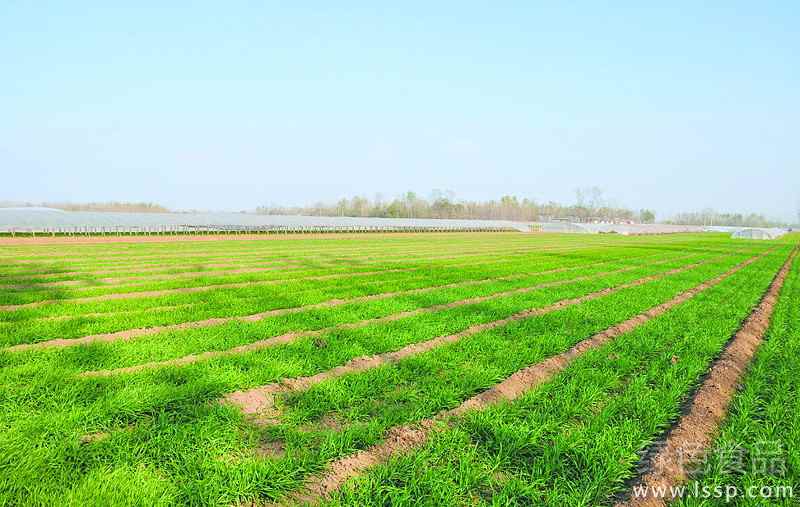Effective management techniques for promoting the growth of orchards in Sichuan in autumn

After fruit harvest, it does not mean the end of fruit tree management. if there is no reasonable fertilization, pest control and pruning, the result will lead to soil hardening, insufficient fertility and weak tree strength, resulting in insufficient nutritional growth and insufficient storage nutrients. There are no sufficient nutrients for flower bud differentiation and development, and the fruit setting rate is very low or unstable in the coming year, forming a low-quality orchard. Therefore, strengthening management in autumn plays an important role in reducing the occurrence of diseases and insect pests, promoting tree growth, restoring tree potential, improving the quantity and quality of flower buds, and is an important link to ensure high and stable yield in the coming year. In this regard, Chen Dong, an expert from the Provincial Academy of Agricultural Sciences, reminded fruit growers to strengthen orchard management.
Post-harvest pruning
After the fruit trees are harvested, the branches should be straightened out and the light conditions inside the trees should be improved. Because in the crown with poor light conditions, it is difficult to form full flower buds. Therefore, it is necessary to cut off the disease and insect branches, cross branches, overlapping branches, thin and weak branches and long branches in the crown in order to reduce tree consumption and increase photosynthesis and accelerate the formation and development of flower buds.
Clean up the orchard
The key point is to remove fallen leaves, dead branches, diseased fruits and weeds from the orchard, transport them out of the orchard or bury them deeply or burn them centrally.
Fertilizer and water management
Fertilization should be applied as early as possible after harvest, especially for trees with weak tree potential and more fruit in the same year, in order to make up for the lack of nutrients in the tree body. Ditches can be opened to apply organic fertilizer and a small amount of phosphorus and potassium fertilizer. Farm manure is the main organic fertilizer, generally, 30-50 kg of farm manure and 0.3-0.5 kg of superphosphate are applied to each fruiting tree at the beginning of 5-6 years, and 70-100 kg of farm manure and 0.5-1.0 kg of calcium superphosphate are applied to each tree at full fruit stage, which are watered immediately after application. In addition, combined with spraying 0.3% Mel 0.5% urea and 0.3% potassium dihydrogen phosphate 2-3 times, this can improve the nutrition level of the tree, keep the tree strong after harvest, and promote flower bud differentiation, so as to ensure the yield in the coming year.
Prevent disease and protect leaves
Focus on the prevention and control of early deciduous diseases, leaf-eating pests, stem borer, red, yellow spiders and other diseases and insect pests. In autumn, fruit trees were sprayed with fungicides and insecticides 1-2 times after fruit harvest, combined with foliar spraying 0.3% Mel 0.5% urea to delay defoliation and promote leaf photosynthesis.
Drainage and waterlogging prevention
Fruit trees are afraid of waterlogging, long-term stagnant water or long-term flooding in orchards will seriously affect the growth and development of fruit trees, and even die, such as peach trees will die after 24 hours of continuous flooding, but also cause a variety of diseases. This year, Sichuan has experienced a drought not seen in decades, and there is likely to be continuous rain around September, so it is necessary to strengthen orchard waterlogging prevention, clean up drains in time and repair the drainage system.
High grafting and replacement
In most parts of Sichuan, the winter climate is mild, so the height of fruit trees can be replaced before and after the National Day. This period of grafting is beneficial to check the survival rate in spring and make up in time. The multiple grafting method is often used in this stage of grafting.
- Prev

Nine key points of safe overwintering in field management of winter wheat at seedling stage
Nine key points of safe overwintering in field management of winter wheat at seedling stage
- Next

The cultivation method and precautions of the iron tree show that it must be raised in this way in order to see it blossom.
Iron trees need to choose sandy soil that is well drained, loose, fertile and slightly acidic. Light: put it in a sunny place, especially when new leaves are growing. Temperature: do not lower than 10 degrees in winter, spray water to cool down when high temperature. Moisture: once every three or five days in spring and autumn, twice a day in summer, and once every ten days in winter. Fertilization: mainly nitrogen and potassium fertilizer.
Related
- Fuxing push coffee new agricultural production and marketing class: lack of small-scale processing plants
- Jujube rice field leisure farm deep ploughing Yilan for five years to create a space for organic food and play
- Nongyu Farm-A trial of organic papaya for brave women with advanced technology
- Four points for attention in the prevention and control of diseases and insect pests of edible fungi
- How to add nutrient solution to Edible Fungi
- Is there any good way to control edible fungus mites?
- Open Inoculation Technology of Edible Fungi
- Is there any clever way to use fertilizer for edible fungus in winter?
- What agents are used to kill the pathogens of edible fungi in the mushroom shed?
- Rapid drying of Edible Fungi

